Happy Thanksgiving!
/From my garden to yours, happy Thanksgiving!
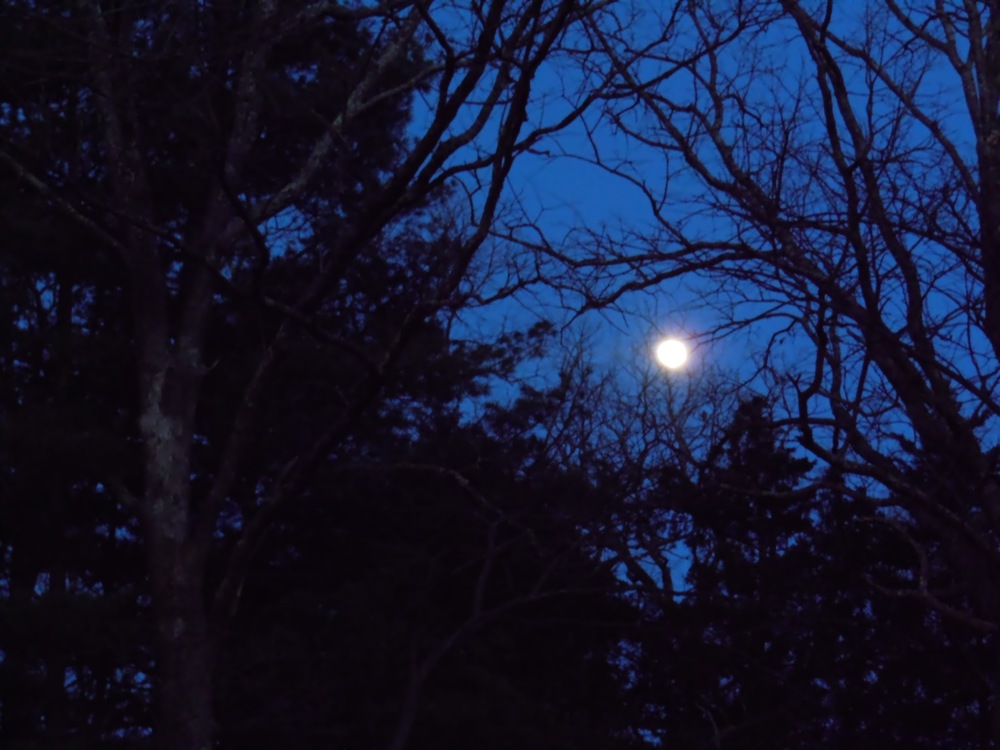
"Got no check books, got no banks. Still I'd like to express my thanks — I got the sun in the morning and the moon at night...." ~Irving Berlin
Changing in a changing climate with Charlotte at Bluebird Gardens
Charlotte’s Tips for Fall Gardening
From my garden to yours, happy Thanksgiving!

"Got no check books, got no banks. Still I'd like to express my thanks — I got the sun in the morning and the moon at night...." ~Irving Berlin

Why Leaves Change Color
Having grown up in South America on the Equator, where the “seasons” are rain or shine, I can still remember the delight of seeing my first fall in North America. We were visiting friends the Midwest. It was the peak of fall colors, the farm countryside covered in peachy sugar maples, red dogwoods, yellow hickories and orange brown oaks. Until we moved back years later, I thought trees in North America were different colors all year around.
Tree leaves, such as these red dogwood tree leaves, do have different colors. We just don’t see them until a change in light and temperature triggers the decline of green chlorophyll to let colors shine through.
Why Leaves Change Color
Leaves are fascinating solar-powered factories that produce most of the food trees need. Leaves contain chlorophyll, which absorbs sunlight and turns carbon dioxide and water into carbohydrates, such as sugars and starch.
Hidden in those leaves are yellow to orange pigments, which also give carrots and pumpkins their color.
In fall, changes in daylight and temperature signal trees to stop producing food. Chlorophyll breaks down, the green color disappears, and the yellow to orange colors become visible.
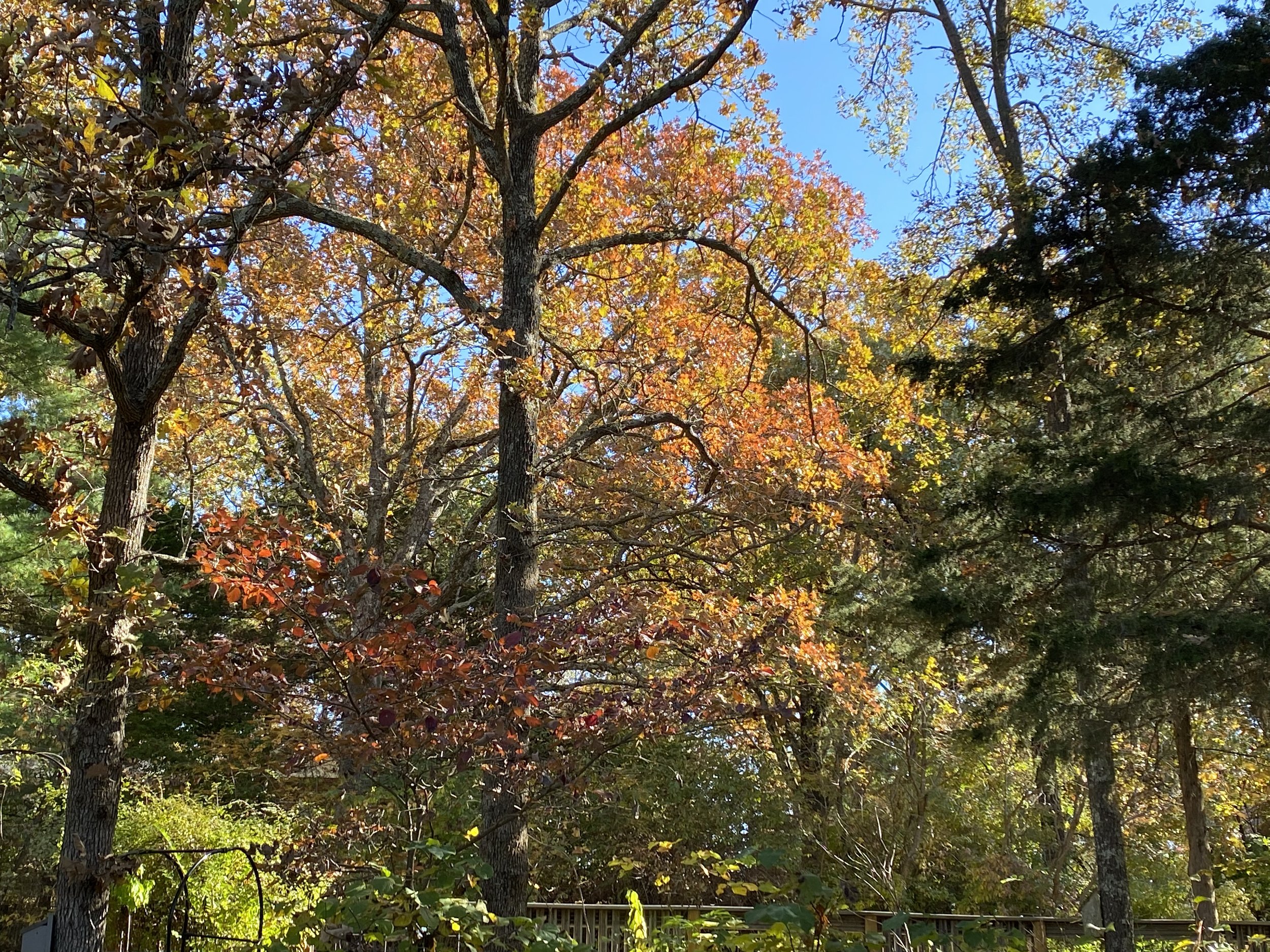
In fall, trees in my garden turn a variety of colors. (Photo by Charlotte Ekker Wiggins)
How Leaves Turn
As leaves undergo other chemical changes, additional colors appear, such as red anthocyanin pigments. Those pigments give leaves their reddish to purplish colors, while sugar maples show peach and orange. All these colors are due to the mixing of varying amounts of chlorophyll residue and other leaf pigments.
Temperature, light, and water supply have an influence on the degree and duration of fall color. Low temperatures above freezing will favor trees producing anthocyanin. Early frost will weaken the brilliant red color. Rainy and overcast days sometimes increase fall color intensity.
Rainy days can also mark the immediate end of fall colors when wind blows leaves off.
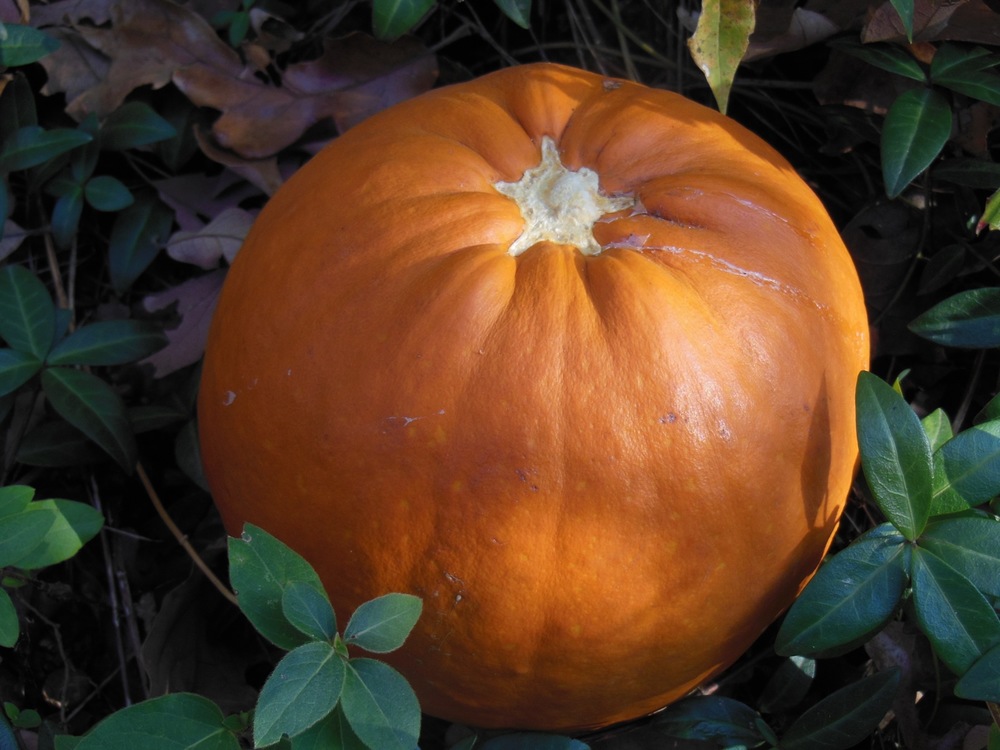
"Oh how we love pumpkin season. You did know this gourd-ish squash has its own season, right? Winter, Spring, Summer, Pumpkin.... We anxiously anticipate it every year. "
~Trader Joe’s Fearless Flyer, October 2010
Of all the vegetables that come out of a fall garden, one stands out to me above the rest. Or maybe I should say it sprawls below.
Pumpkins, a member of the squash family, bring in the fall holidays, starting with Jack O' Lanterns for Halloween. Pumpkins that make it through all those little trick or treaters become one of the highlights of Thanksgiving as a pie and baked side dish.
Left over pumpkin gets recycled in the next holiday as a Christmas cookie. Pumpkin seeds get roasted and salted as a snack.
What other ways do you use pumpkin, do you have a favorite recipe?
“Somewhere along the way, I realized that the new year doesn’t begin for me in January. The new and fresh has always come for me in the Fall. Ironically, as leaves are falling like rain, crunching beneath my feet with finality, I am vibrating with the excitement of birth and new beginnings.... My year begins in Autumn.”
~Betsy Cañas Garmon
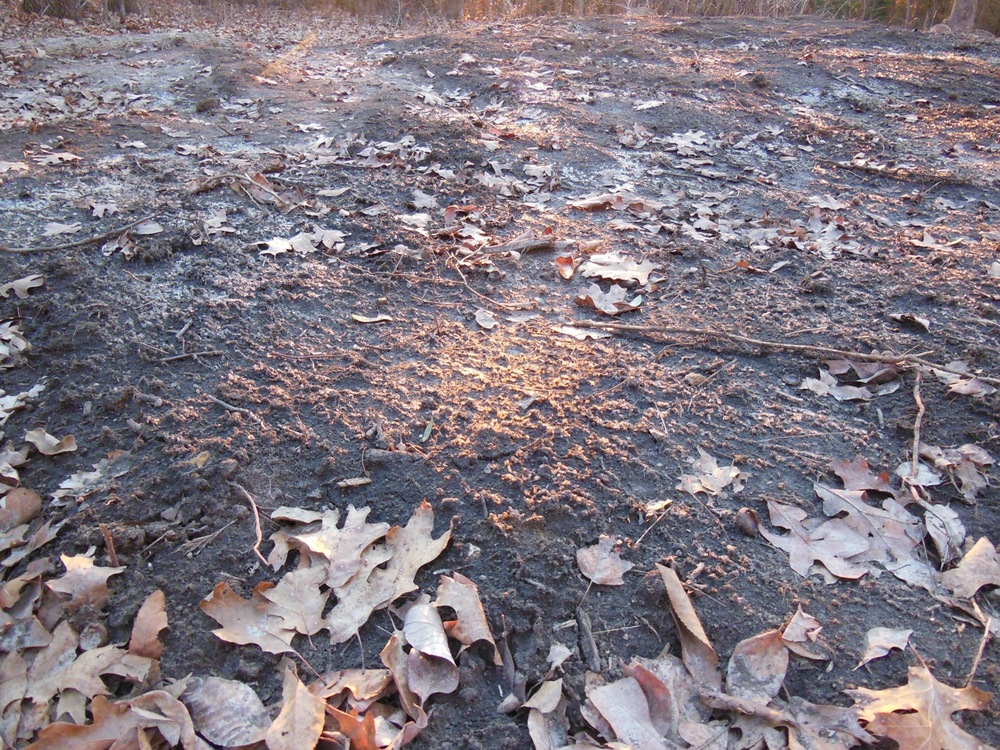
When do you have new beginnings?

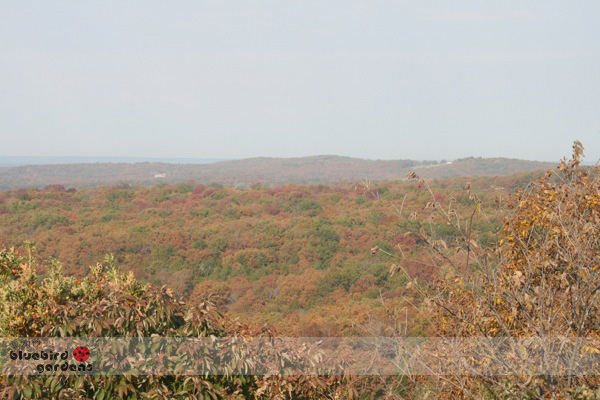
The changing of leaf color in fall in Missouri out my office window is surprising.
No two days ever look the same.
Perennially-green native Cedar trees hold on to green.
As morning haze burns off, the view gets a sunny tone, adding even more color.
The colors last until early November, or until a storm knocks leaves off.
Charlotte

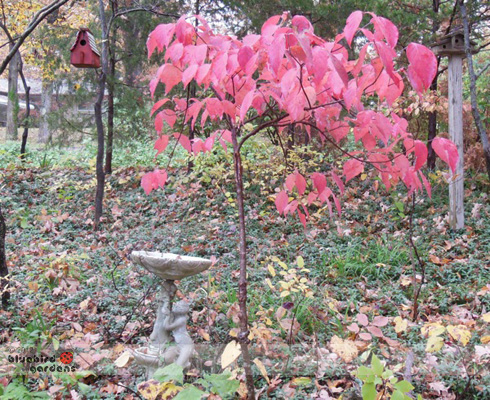
"Everyone must take time to sit and watch the leaves turn." -- Elizabeth Lawrence
In the midwest, of all of the four seasons, fall is a time when nature puts on a show just for us.
One day there's green and some brown, the result of a continuing midwest drought. Next day, trees and bushes seem to magically turn into a rainbow of colors. Leaves, too!
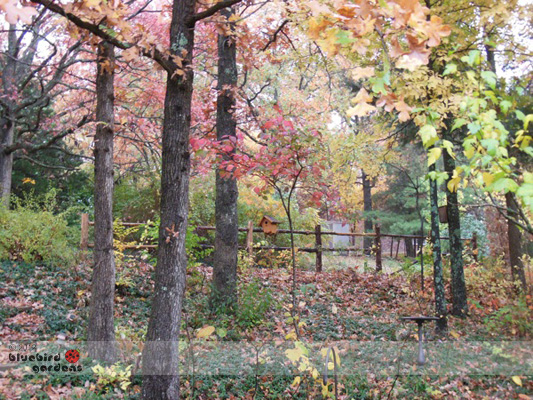
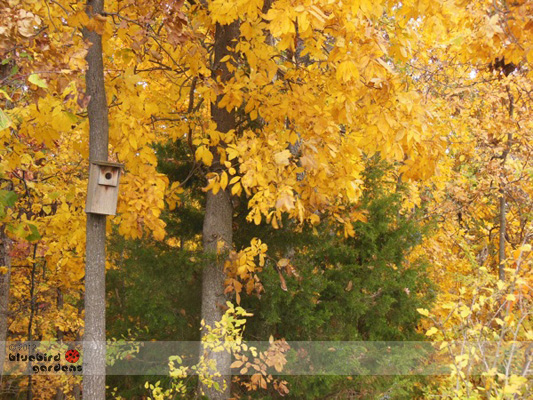

I didn't appreciate a bulb planter until I had gift bulbs to plant.
Think biscuit cutter, only for planting.
You insert the bulb planter into ground; turn, then easily remove soil.
Pop in a bulb. Cover. Water.
Is it spring yet?
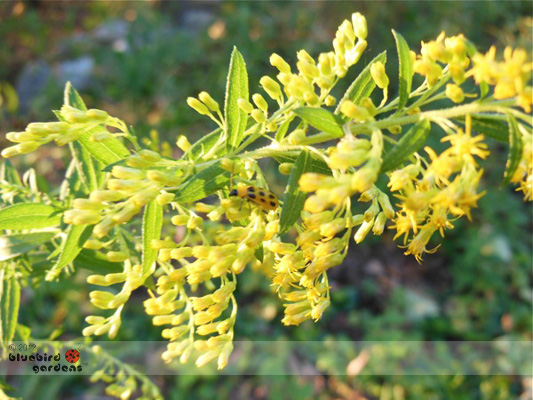
Of the four seasons, spring and fall are sneezing seasons in Missouri. A high pollen count from wildflowers like yellow goldenrod are wonderful for honeybees but hard on people who have allergies.
According to Cindy Brick's "The Stitcher's Language of Flowers," this is a "sneezing ditty" from the Ozark Mountains:
"Sneeze on Monday, sneeze for fun:
Sneeze on Tuesday, see someone;
Sneeze on Wednesday, get a letter;
Sneeze on Thursday, something better,
Sneeze on Friday, sneeze for sorrow;
Sneeze on Saturday, a beau comes tomorrow,
Sneeze on Sunday, trouble on Monday."
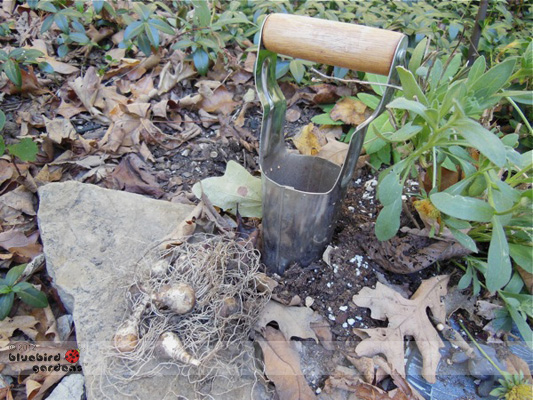
I didn't appreciate a bulb planter until I had gift bulbs to plant.
Think biscuit cutter, only for planting.
You insert the bulb planter into ground; turn, then easily remove soil.
Pop in a bulb. Cover. Water.
Is it spring yet?
Charlotte
Have you heard Daddy Long Legs are poisonous?
It's not true, these arachnids often mistaken for spiders, are like ladybugs, good to have in your garden. Daddy Long Legs spiders feed on small insects, fungus, dead organisms and fecal material. They're also a bit of a change artist. Daddy Long Legs can also detach their legs which will continue to walk away and confuse would-be predators. They also have special glands that act as a repellent against ants.
Charlotte
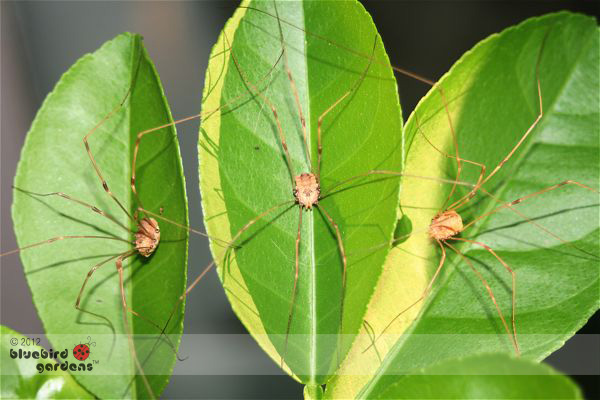
If sticking coffee beans in one of my Mom’s orchids is considered
gardening, I’ve been gardening since I was 2 years old. I’ve always been
fascinated by how things grow and what we can do with them.
My Missouri limestone hill wildlife garden is also my sanctuary. I crave
it for the closeness I feel with God, and the spiritual renewal it gives
me. I will share my adventures here, all of them - even the ones that don’t
work - because I learn the most from failures.
The wonderful thing about a garden is that there is always a next year.
USDA Zone 6b
Limestone Hillside